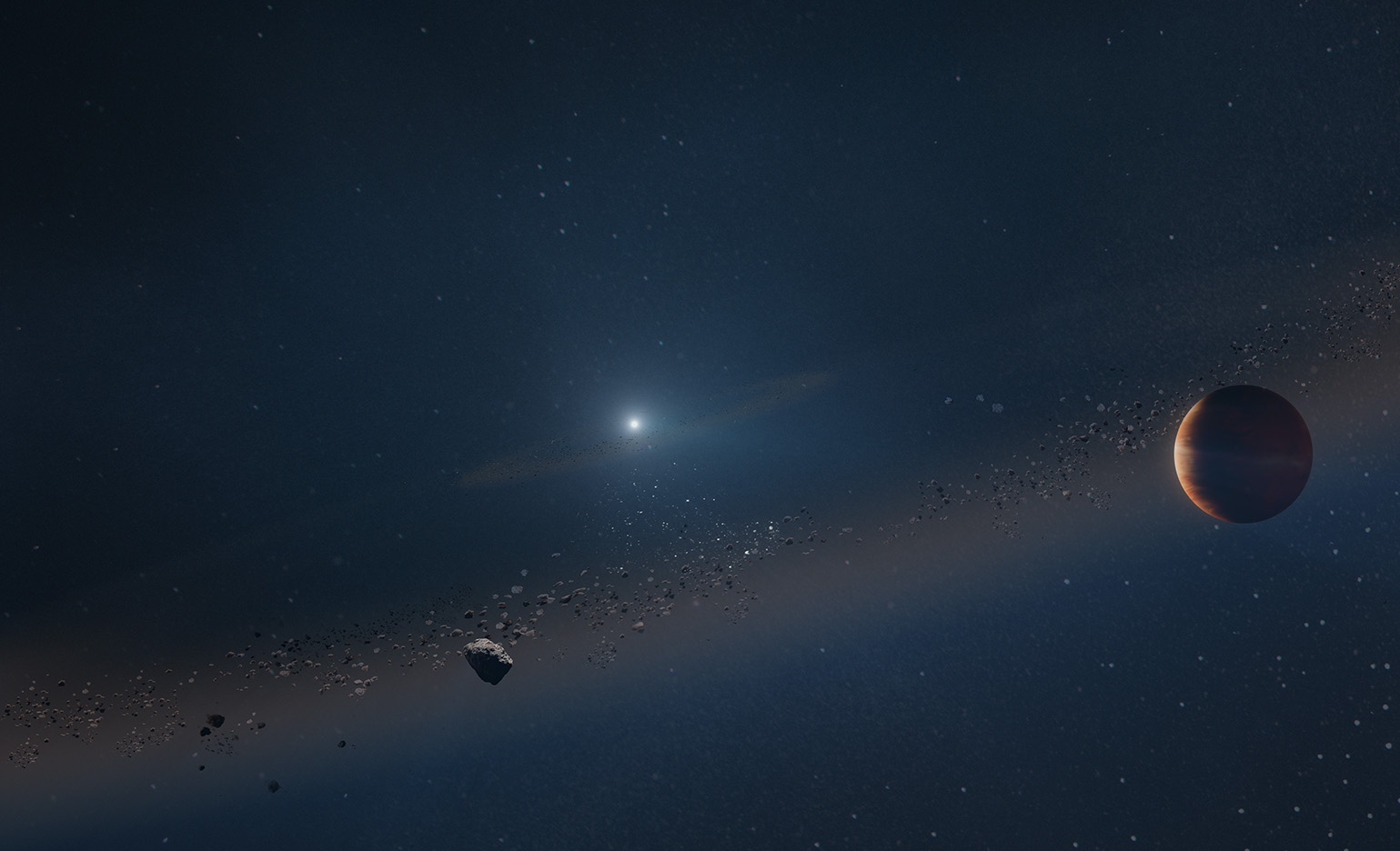Planetary system found similar to the future of the Solar System after the Sun's death
Scientists from the IAA-CSIC are involved in the discovery of a system formed by a white dwarf star and a planet similar to Jupiter.
The discovery, published in 'Nature', shows that planets can survive the death of their star.
In about five billion years, the Sun will run out of fuel and begin to collapse under its own weight, a process that will heat and expand the outer layers, which will engulf the orbits of Mercury, Venus, and perhaps the Earth. This red giant stage will be followed by a stage in which the envelope will expand freely to form a planetary nebula, with the bare core of what was once the Sun, a white dwarf star, still glowing at its centre.
Although some studies claimed that planets could survive the death of the Sun, in particular Jupiter-like planets, observational evidence was still scarce. Now, a group of scientists with the participation of the Instituto de Astrofísica de Andalucía (IAA-CSIC), presents in the latest issue of the journal Nature the discovery of a system formed by a white dwarf and a Jovian-type planet, which gives a glimpse of the possible future of the Solar System.

Artist’s rendition of a newly discovered Jupiter-like exoplanet orbiting a white dwarf, or dead star.
This system is evidence that planets can survive their host star’s explosive red giant phase and is the very first confirmed planetary system that serves as an analog to the fate of the Sun and Jupiter in our own solar system.
High-resolution images from the Keck Observatory reveal that the newly discovered white dwarf has 60% of the mass of the Sun, and that its surviving exoplanet is a giant gas world with a mass 40% greater than that of Jupiter. The planet orbits the star in a wide orbit, at a minimum distance of about three times that between the Earth and the Sun. This finding confirms that planets orbiting at a sufficiently large distance can continue to exist after the death of their star," says Joshua Blackman, a researcher at the University of Tasmania (Australia) who led the study, "Because this system is an analogue to our own Solar System, it suggests that Jupiter and Saturn could survive the Sun's red giant phase.
Artist rendering of a main sequence star ballooning into a red giant as it burns the last of its hydrogen fuel, then collapses into a white dwarf. What remains is a hot, dense core roughly the size of Earth and about half the mass of the Sun. A gas giant similar to Jupiter orbits from a distance, surviving the explosive transformation. Credit: W. M. Keck Observatory/Adam Makarenko
The team discovered the planet using a technique called gravitational microlensing, which occurs when a star close to Earth momentarily aligns with a distant star. This creates a phenomenon in which the gravity of the foreground star acts as a lens and magnifies the light from the background star. If a planet orbits the nearby star, it will temporarily warp the magnified light as it passes by. When the science team studied the planet's host star, they found that its light was not bright enough for an ordinary main-sequence star (or an adult star). The data also ruled out the possibility that it was a brown dwarf (an intermediate object between stars and giant planets) or a compact object such as a black hole. The only viable option was a white dwarf star. "Given that 97% of the stars in our Galaxy will become white dwarfs, this discovery and those that follow will give us a glimpse into the future of exoplanets," says Camilla Danielski, a researcher at the IAA-CSIC who participated in the discovery.
The research team plans to include their results in a statistical study to find out how many other white dwarfs have intact planetary survivors.
J.W.Blackman et al. A Jovian Analog Orbiting a White Dwarf Star. Nature. DOI: 10.1038/s41586-021-03869-6
Camilla Danielski (IAA-CSIC) - cdanielski[at]iaa.es
Instituto de Astrofísica de Andalucía (IAA-CSIC)
Unidad de Divulgación y Comunicación
Emilio García - garcia[arroba]iaa.es - 649 407 445
https://www.iaa.csic.es
https://divulgacion.iaa.csic.es

